#gulf porpoise
Text
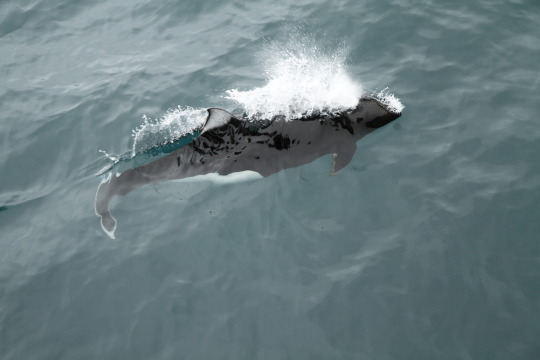
Dall's porpoise Phocoenoides dalli dalli
Observed by jujurenoult, CC BY
#Phocoenoides dalli dalli#Dall's porpoise#Cetacea#Phocoenidae#cetacean#porpoise#North America#United States#Alaska#Pacific Ocean#Gulf of Alaska#Resurrection Bay
9 notes
·
View notes
Text
9 notes
·
View notes
Text

Super excited to share my Vaquita piece for the new 2024 issue of Sea Unseen Zine (@seaunseenzine)! There are over 60 gorgeous marine-themed artworks in this issue, and all proceeds go towards the Australian Marine Conservation Society 🌊🐋🦈🦐
Keep reading below to learn a bit more about this small, critically endangered cetacean!
At just around 95 lbs in mass and 4.5 feet in length, the Vaquita (Phocoena sinus) is the world's smallest living cetacean! Like many other porpoises, they feed on a range small fish, squid, and crustaceans within their locality. They have an incredibly small range, known only to reside in shallow waters in upper Gulf of California. Due to their rarity, not much else is known about this species.
Sadly, the Vaquita is on the brink of extinction. Recent estimates suggest only 10 individuals remain. Illegal fishing operations result in these little cetaceans becoming bycatch, and is the biggest cause of their decline.
Current conservation efforts for the Vaquita seek to mitigate threats such as fisheries, pollution, and habitat destruction. Hopefully, with enough protection and patience, the population of this incredible animal will stabilize and even recover 💙
#seaunseenzine#vaquita#wildlife conservation#endangered species#marine life#charity zine#art zine#cetaceans
274 notes
·
View notes
Text
🐬Daily Cetacean Fact:🐬
Vaquita Porpoise: The vaquita is a shy member of the porpoise family. Vaquitas are the most endangered of the world’s marine mammals. Less than 20 vaquitas remain in the wild, and entanglement in illegal gillnets is driving the species toward extinction. Vaquitas have the smallest range of any whale, dolphin, or porpoise. They only live in the northern part of the Gulf of California


#vaquita#vaquita porpoise#porpoise#cetacean#cetacean facts#daily cetacean#daily cetacean fact#porpoise fact#facts about porpoises#facts about cetaceans#respect the locals#endangered#endangered marine life#critically endangered#marine life blog#marine mammals#marine animals#marine biology#marine life#marine#ocean animal#ocean life#ocean life blog#porpoise post#cetacean post#marine life post#advocacy for marine life
129 notes
·
View notes
Text
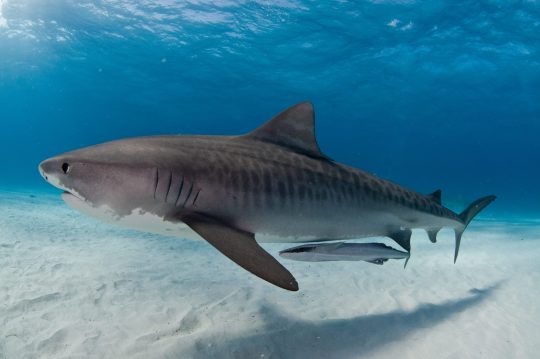
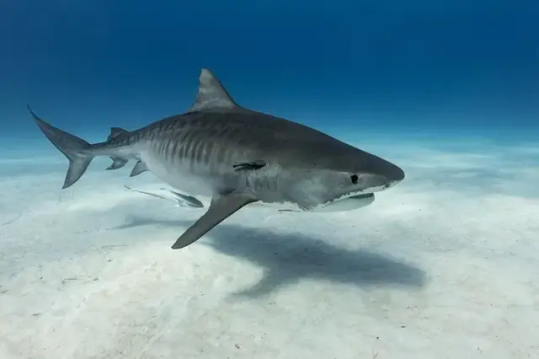

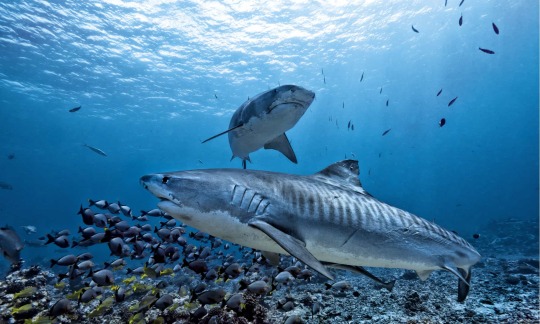
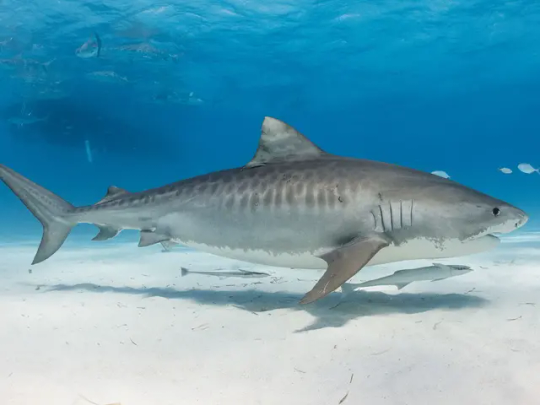
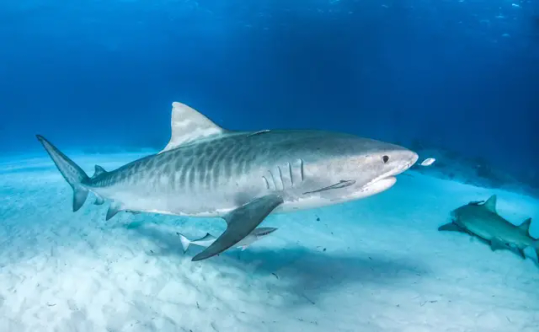
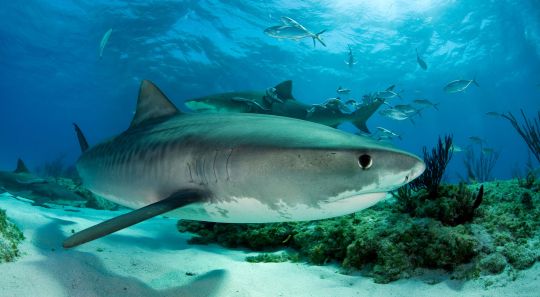
The tiger shark is a species of ground shark, and the only extant member of the genus Galeocerdo and family Galeocerdonidae. It is a highly nomadic species which inhabits tropical and subtropical waters world wide up to 3,000ft (900m) in depth, and is often found in coastal waters with particular abundance in the gulf of mexico, Caribbean sea, Indian ocean, and western pacific. Tiger sharks are often call the garbage cans of the sea and have reputation for eating almost anything. As such there diet is wide and heavily varied an is known to regularly include: small fish, jellyfish, crustaceans, cephalopods and other mollusks, rays, skates, sawfish, sea birds, sea snakes, sea turtles, other sharks, dolphins, seals, sea lions, dugongs, manatees, crocodilians, porpoises, and sick or injured whales. When near islands or coastlines they have been known to eat sheep, goats, dogs, pigs, rats, horses, deer, cattle, cats, camels, monkeys, inland birds, bats, lizards and inedible objects, such as license plates, cans, tires, books, boat oars, soccerballs and baseball bats. Tiger sharks are themselves occasionally preyed upon by orcas, great whites, and saltwater crocodiles. The tiger shark commonly reaches 10.5-14ft (3.2 -4.26m) in length and 385- 1400lbs (175 – 635kg) in weight, with the largest recorded reaching 18ft (5.5m) long and 3360lbs (1525kg). This ranks the tiger shark amongst the largest extant sharks on earth only being surpassed by the whale, basking, great white, pacific sleeper, Greenland, and blunt nosed sixgill sharks. They have a broad snout and stocky body with proportionally large fins and a long upper tail. Tiger shark teeth are unique with very sharp, pronounced serrations and an unmistakable sideways-pointing tip. Such dentition has developed to slice through flesh, bone, and other tough substances such as turtle shells. In the northern hemisphere the mating season takes place from march to may and the southern hemisphere from November to January, with males breeding every year while females breed once every 3 years. After a year long pregnancy mother tiger sharks give birth to 10 to 80 pups. Under ideal conditions a tiger shark may live upwards of 12 years.
#pleistocene#pleistocene pride#pliestocene pride#pliestocene#fish#shark#shark week#tiger#tiger shark
224 notes
·
View notes
Text

Vaquita, Photograph by National Geographic
Bycatch from the fishing industry has led to the almost certain demise of the world’s smallest porpoise, the vaquita in the Gulf of California, and several more species are likely to follow.
Entanglement in fishing gear is the leading threat for whales and dolphins around the globe – estimated to cause at least 300,000 deaths per year.
Source
33 notes
·
View notes
Text

Excerpt from this press release from the Center for Biological Diversity:
The UNESCO World Heritage Committee renewed its call today for urgent action to protect the critically endangered vaquita porpoise in Mexico. With merely six to eight individuals estimated remaining, the vaquita faces imminent extinction from entanglement in illegal fishing gear.
The committee agreed to retain the Islands and Protected Areas of the Gulf of California World Heritage site — the only home to vaquita — on its List of World Heritage in Danger. In its review, the committee determined that Mexico’s recent enforcement actions to quell illegal fishing in the area were “not fully effective” in protecting the vaquita. The committee also approved a suite of corrective measures for Mexico to implement to safeguard the species.
“I appreciate the committee’s continued pressure, but it’s disheartening that Mexico still hasn’t kept its promises to protect the quickly vanishing vaquita,” said Alejandro Olivera, senior scientist and Mexico representative at the Center for Biological Diversity, who is attending the committee meeting in Delhi. “Despite a 2020 ban, lethal gillnets still plague these little porpoises’ habitat. Mexico needs to step up immediately, expand the vaquita’s protected area, and enforce the law by stopping illegal fishing.”
Under the World Heritage Convention, a site may be listed as “in danger” if development projects or major public works threaten the natural values the site was designated to protect. According to UNESCO, the aim of the list is to “inform the international community” of the situation and “encourage corrective action.”
The vaquita population has declined drastically, falling from nearly 600 in 1997 to fewer than 10 in 2024 because of entanglement in gillnets used for illegal fishing. These nets target shrimp and a variety of fish, including totoaba, an endangered species whose swim bladder is coveted in China. Despite some reduction in illegal fishing within a no-fishing zone known as the zero tolerance area, the practice remains widespread outside this zone, posing a continuous threat to the vaquita’s survival.
The committee decided that for the “in danger” designation to be lifted, Mexico must enact the following corrective measures:
implement sustainable fishing practices that avoid harming marine life
demonstrate a five-year increase in the vaquita population with healthy individuals and calves
effectively protect the area from illegal fishing
eliminate gillnets from the Vaquita Refuge and Biosphere Reserve
collaborate internationally to combat illegal totoaba poaching and trafficking
16 notes
·
View notes
Text
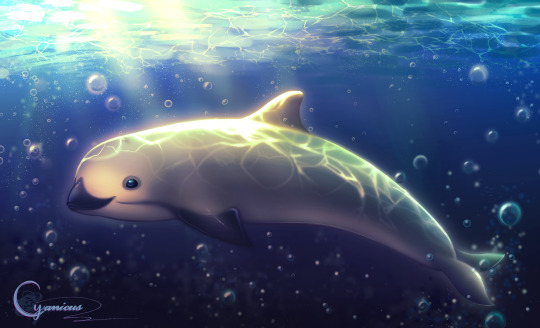
My submission for @considernature 's art competition~ 🫧🐬 #considerart2023
Meet the vaquita! They are the world's smallest species of porpoise, (measuring about 5 feet in length), and can be identified by their distinctive black markings on their lips, fins and eyes. They live primarily in the Gulf of Mexico, and are one of the rarest dolphins in the world- but sadly this is because vaquitas are a critically endangered species. These adorable creatures have been hunted to the very brink of extinction for human consumption- specifically because they're believed to have medicinal benefits, but there's no scientific evidence to support this belief.
I've always had a fondness for the ocean and its sea creatures, and after learning more about vaquitas from Consider Nature's blog, I just had to draw one so that more people would know about them! The vaquita as well as many other species are suffering due to our carelessness, and climate change is only getting worse, which is why I'm happy to participate in this contest regardless of whether or not I win. I want to help spread awareness and hopefully inspire others to do the same 💙
#considerart2023#digital art#digital drawing#digital illustration#art#drawing#illustration#vaquita#dolphin#porpoise#sea life#sea creature#marine life#ocean#artists on tumblr#female artists on tumblr#nature#animals
36 notes
·
View notes
Text
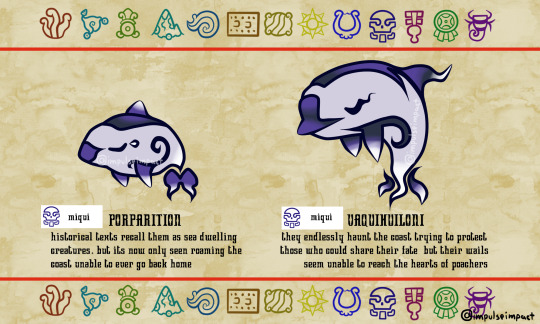
vaquitas are porpoises endemic to the gulf of California, they are the smallest cetaceans known, and are critically endangered, to the point that a few years ago less than 20 individuals where known. this is because poachers looking for fish will accidentally catch them with their nets, and although various measurements have been taken it doesnt seem like theyve been able to stop the poaching
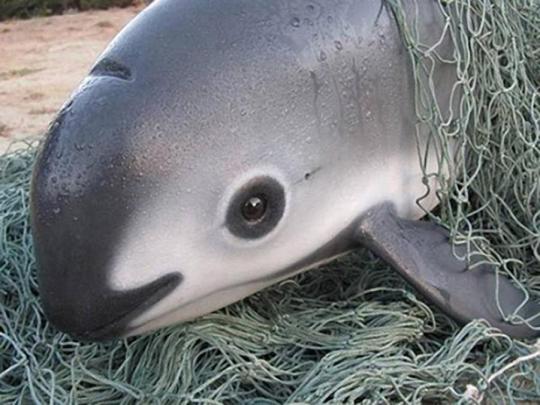
while there might be a very slim chance of some recovery its mesoma counterpart is extinct, and now haunts the coast as a tlapehuiloni (nahuatl for ghost, this translation might be iffy as some sources translate it as ghost and others as scarecrow)
[example of source translating as ghost]
[example of source translating as scarecrow]
38 notes
·
View notes
Text

The group of mammals that includes whales, dolphins and porpoises is call Cetacea, and the subject of my recent oil painting is the world’s smallest Cetacean, the Vaquita (Phocoena sinus), little porpoise that, at maturity, is less than five feet long. The Vaquita is found only in the waters at the northern end of the Gulf of California and is critically endangered, down to about ten to twenty individual animals left, as of earlier this year. Its existence as a species was first established in 1958, based on the structure of skulls retrieved from dead individuals found on the beach, but it was only in 1985 that its external appearance was finally described. “Vaquita” means “little cow” in Spanish. No other marine mammal has such a small range.
The main threat to the species is another animal species found only in the Gulf of California, a large drum fish called the Totoaba (Totoaba macdonaldi), itself now an endangered species. I have shown a couple of them in the background. The problem is a demand by an Asian market for the swim bladders and meat of the Totoaba. The nets used to catch the fish caught, entangled drowned the Vaquitas. The bladders are a delicacy in Chinese cuisine, and the bladders are mistakenly credited with treating fertility, circulatory and skin problems. The demand for Totoaba commenced a century ago, after a native Chinese fish, the Chinese Bahaba (Bahaba taipingensis), also known as the Giant Yellow Croaker, as nearly exterminated. It is still critically endangered, with both fish species facing other threats captured by the catch-all rubric, environmental degradation.
A major threat to the north end of the Gulf of California’s marine life is all too well known: the salinity of this region, surrounded by land, has for thousands of years been determined by the flow of fresh water from the once mighty Colorado River, at the “top end” of the sea. But the water of that river, whose force carved the Grand Canyon upriver, and could fill the aquifer behind Hoover Dam, all gets drained off for farming, kitchen taps, golf courses, lawns, gardens, car washes and multiple other human uses before reaching the sea, while at the same time massively unprecedented draught grips the region.
Both Vaquita and Totoaba are protected, and work is underway to commercially raise the latter in fish farms, which potentially carry their own environmental risks. But there is not only poaching, but net captures of other marine life that still threaten both the Vaquita and the Totoaba. The latter has good survival potential but it is extremely frustrating to those of us who care that there seems really to be nothing that can be done to prevent the extinction of the Vaquita at some future point in the current century. It’s far from my best painting; I wanted to convey a sense of tranquility to symbolize the harmonization within nature even with its predatory and competitive nature whereas I perhaps should have tried a more stark or dramatic effect, perhaps the better to reflect my frustrations over my inability to reduce the damage we do to others, other species often unknown to most people, but I felt that at least I should paint its picture, chasing squid in the shallows, an imagined scene based on a reality soon to leave us.
The painting is in oils on compressed hardboard and is 24 by 30 inches in size.
77 notes
·
View notes
Text
SEMIFINALS

[ID: A photo of a vaquita surfacing and a photo of a beluga underwater, with a VS symbol between them. End ID.]
Our other matchup for the semifinals is just as fierce! In one corner, we have the little vaquita, the smallest species of cetacean at just over four feet long! Their name is Spanish for ‘little cow’ and while I can’t say I get the cow part, the little part is quite fitting! These pint sized porpoises are struggling to survive in their native home of the gulf of California, but they can at least be proud of making it so far in the competition!
The other half of this fight is the beluga whale, who was certainly proved a powerful competitor. Although if I was the beluga, I’d watch my back. The sperm whale had some very dedicated supporters…
It’s easy to see why the beluga made it this far! These squishy arctic beasts are known for their friendly appearance and delightful noises. You need all that extra padding when you live in Arctic waters! Another adaptation for the Arctic belugas sport is their lack of a dorsal fin! Gets in the way of the ice!
Photo credit to Thomas A. Jefferson and the NBC
38 notes
·
View notes
Photo

Atlantic harbor porpoise Phocoena phocoena phocoena
Observed by nleav, CC BY-NC
#Phocoena phocoena phocoena#Atlantic harbor porpoise#Cetacea#Phocoenidae#cetacean#porpoise#North America#Canada#New Brunswick#Atlantic Ocean#Gulf of Maine#Bay of Fundy
6 notes
·
View notes
Text
In an effort to get myself used to this site and encourage me to use it more, I'm jumping on the Wet Beast Wednesday trend and posting facts about a different aquatic animal every week.
Starting off cute and sad, I’m going with the vaquita (Phocoena sinus). This dog-sized porpoise is the world’s smallest cetacean and it only lives in one place in the world: the northern end of the gulf of California near Baja. Sadly, they are critically endangered, with an estimated population of less than ten left in the world as of February 2022, making it the most endangered marine mammal (I couldn't find estimates for this year). This is primarily due to them getting tangled in gill nets from illegal fish poaching in their habitat. A study in 2022 indicated that the species may be able to repopulate but they would likely have genetic problems from a severe population bottleneck. Attempts to establish a captive breeding population were unsuccessful. Conservation efforts have generally been ineffective due to the sheer scale of illegal fishing activities, though there is cooperation between the USA and Mexico as well as international pressure on Mexico to crack down on the illegal fishing and protect the vaquitas

Not a lot is known about vaquitas due to how rare they are and because they were only identified as a species in the 50s through bones and scientists didn’t even see an intact specimen until 1985. What we do know is that they are very small, the the larger females reaching a maximum size of about 150 cm (4.9 ft). Males are believed to compete for mates and females usually reproduce once every two years. They are usually found alone or in small groups. Vaquitas have distinctive dark markings around the eyes and mouth.

The vaquita is on the edge of extinction and if rapid, extensive conservation efforts aren’t enacted, they will be gone forever. The vaquita could be a good symbol of why conservation is important and why conservation efforts need to be extensive and properly enforced for them to be effective. I could see them becoming a symbol for endangered species lie polar bears and pandas have become. They are in need of critical help but very well could survive with that help and they are adorable, which is always good for public awareness

#wet beast wednesday#marine biology#marine life#ecology#conservation#vaquita#biology#zoology#science#porpoises#cetaceans
33 notes
·
View notes
Text

THERE ARE ONLY TEN VAQUITAS LEFT
Vaquita, the world's rarest marine mammal, is on the edge of extinction. The plight of cetaceans—whales, dolphins, and porpoises—as a whole is exemplified by the rapid decline of the vaquita in Mexico, with about 10 individuals remaining. This little porpoise wasn't discovered until 1958 and a little over half a century later, we are on the brink of losing them forever. Vaquita are often caught and drowned in gillnets used by illegal fishing operations in marine protected areas within Mexico's Gulf of California. The population has dropped drastically in the last few years.
#vaquita#conservation#endangered#endangered species#wildlife#sea#sealife#dolphin#whales#porpoise#wildlife conservation#help#important psa
20 notes
·
View notes
Text
🐬Daily Cetacean Fact:🐬
Indo-Pacific Finless Porpoise: This species lives in the coastal waters of Asia, especially around, Indonesia, Malaysia, India, and Bangladesh. At the western end, their range includes the length of the western coast of India and continues up into the Persian Gulf. Although most are rather smaller. The flippers are moderately large, reaching up to 20% of the total body length.


#indo pacific finless porpoise#finless porpoise#porpoise fact#daily porpoise#daily porpoise fact#facts about porpoises#porpoise#porpoise post#cetacean#cetacean facts#daily cetacean#daily cetacean fact#cetacean post#facts about cetaceans#marine mammals#marine animals#marine#marine biology#marine life#marine life blog#marine life advocate#advocacy for marine life#respect the locals#ocean animal#ocean life#ocean#ocean life blog
59 notes
·
View notes
Text









Lutjanus campechanus better known as the northern red snapper, mero, huachinango, pargo, or chillo, is a species of marine ray-finned fish belonging to the snapper family Lutjanidae. It is native to the western Atlantic Ocean, the Caribbean Sea, and the Gulf of Mexico, where it can be found around reefs, rocky outcrops, oyster beds, sea ridges, offshore oil rigs, and shipwrecks around 30 to 300ft (9 to 90meters) in depth. They are gregarious and social animals which form large schools with snappers of similar size. Red snapper primary feed on various fish, shrimps, crabs, worms, cephalopods, and are themselves preyed upon by jacks, groupers, sharks, barracudas, eels, seals, sea lions, dolphins, whales, and porpoises. Reaching up to 40 inches (100cms) in length and 50lbs (22.8kgs) in weight, northern red snapper sport a sloped laterally compressed body with a spiny dorsal fin. Coloration of the northern red snapper is light red, with more intense pigment on the back. It has 10 dorsal spines, 14 soft dorsal rays, three anal spines and eight to 9 anal soft rays. Juvenile fish (shorter than 30–35 cm) can also have a dark spot on their sides, below the anterior soft dorsal rays, which fades with age. They have a long triangular face with the upper part sloping more strongly than the lower. The jaws are of equal length, and have enlarged canine teeth which is where they get the common name snapper. Breeding occurs during the summer. Spawning ensues in the early afternoon to dusk hours and with females expelling anywhere from 1,000 to 2.5 million buoyant pelagic eggs that are externally fertilized by males and hatch within 20-27 hours. Red snapper larvae settle out of the water column about 20 days after hatch and inhabit open rocky/shelly bottom. Under ideal conditions a red snapper will reach sexual maturity at around 2 years of age and may live upwards of 50.
#pleistocene pride#pliestocene pride#northern red snapper#fish#red snapper#snapper#atlantic#sea life#ocean#marine#marine life#fishing#animal facts
2 notes
·
View notes